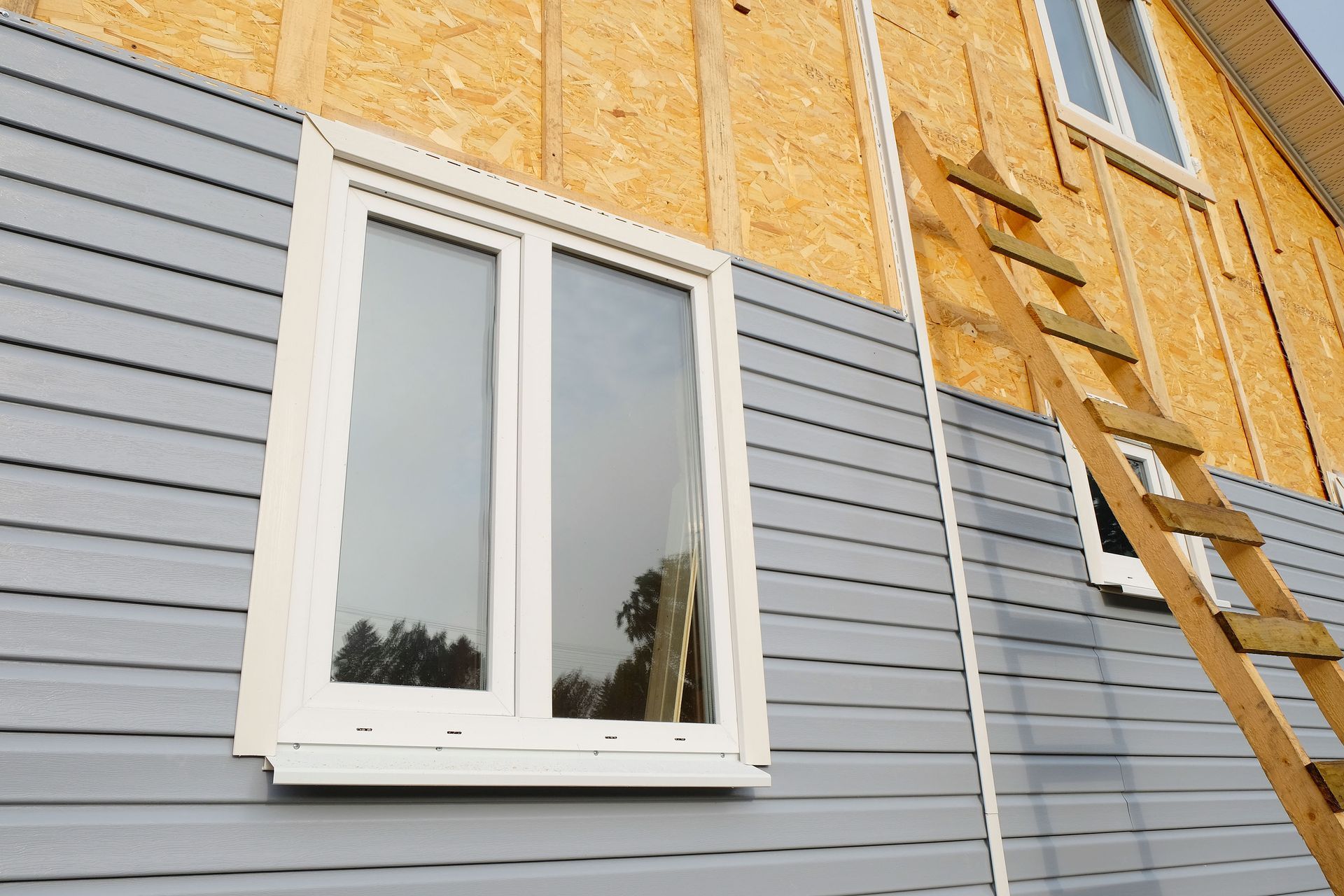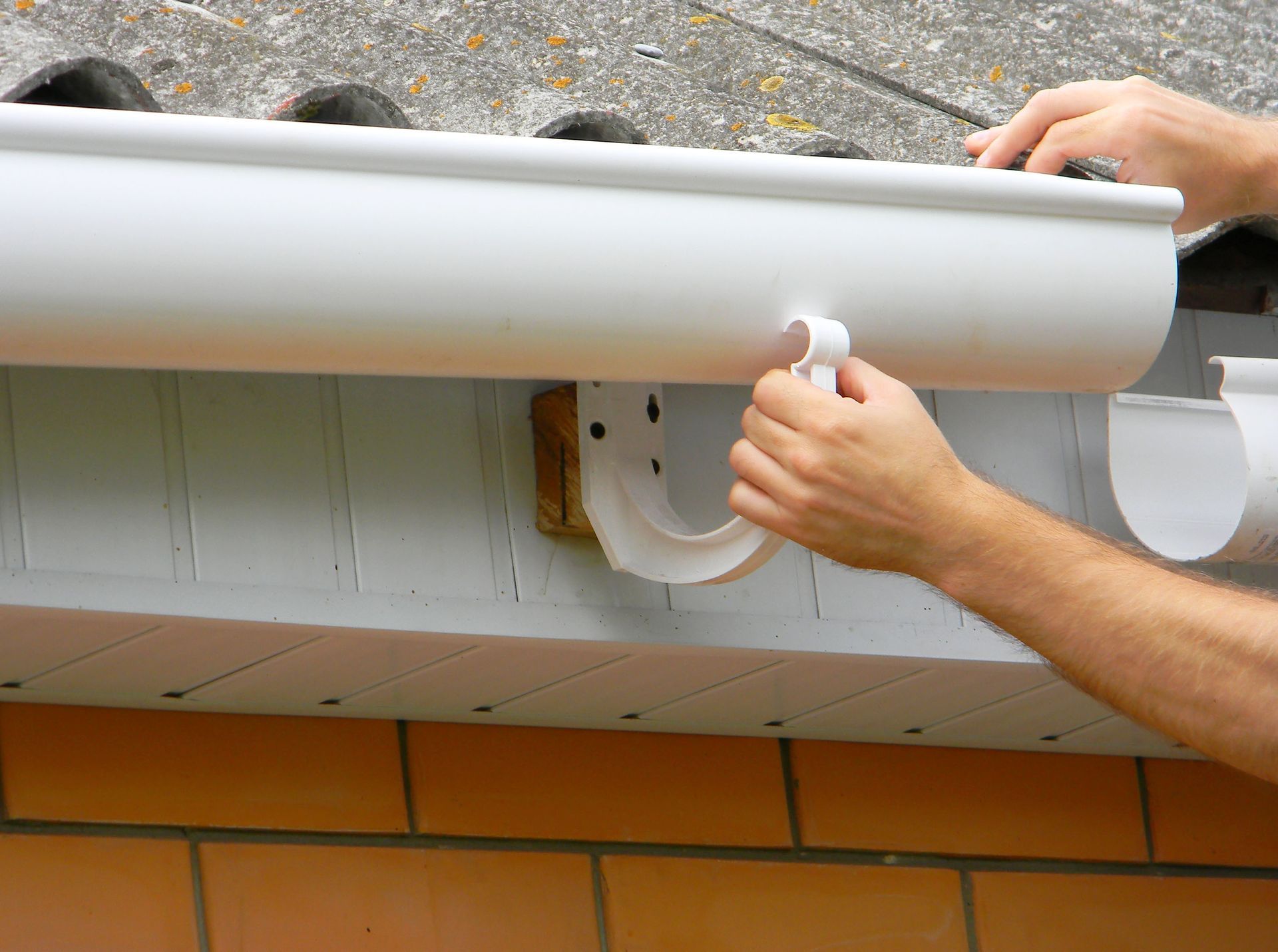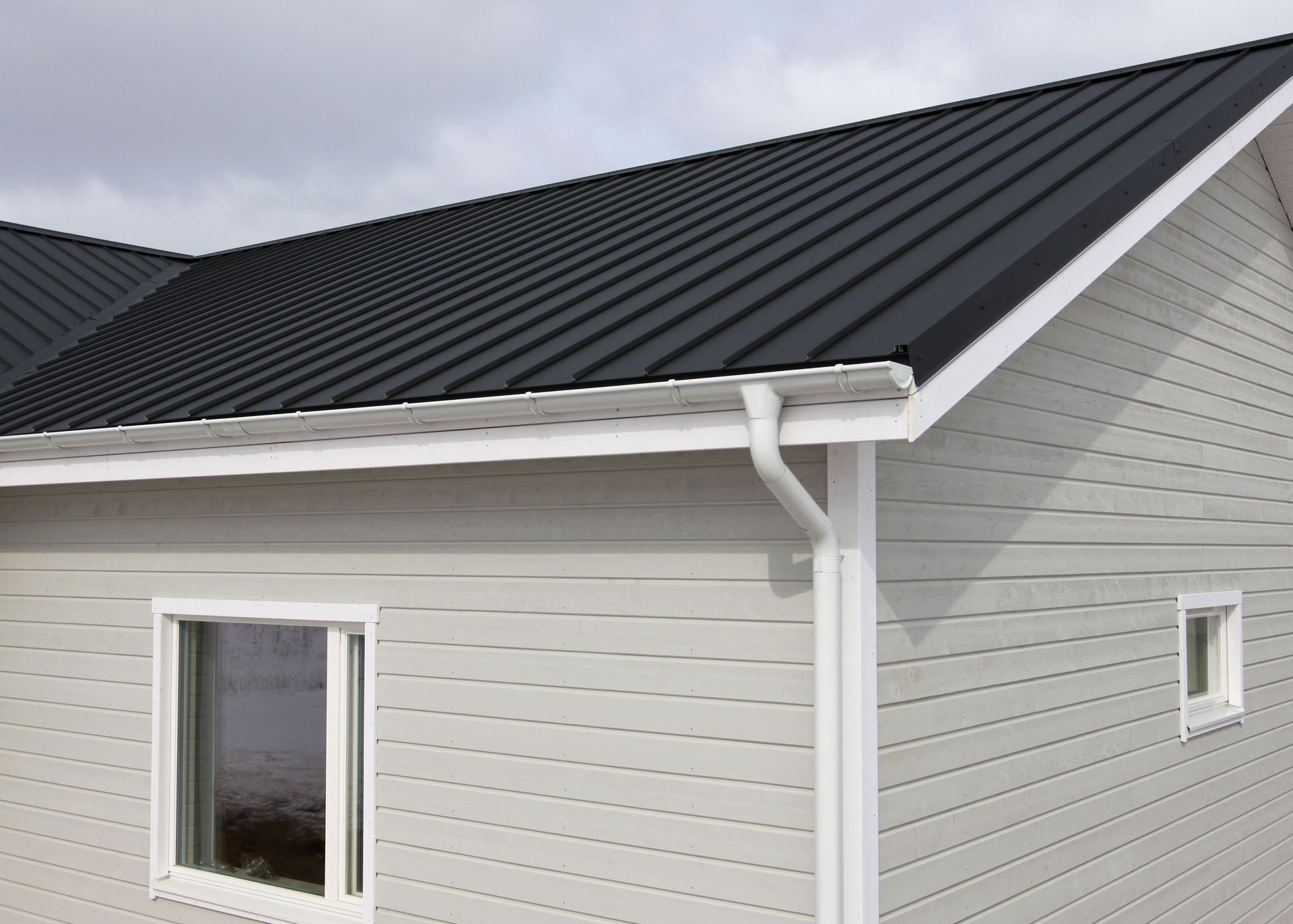Top 6 Signs of a Leaking Roof: Warning Signs and Repair Tips
Roofs are more than a shield against rain, snow, and the sun. They also protect the overall structural integrity of your home. That’s why it is crucial to identify issues early before minor leaks turn into significant problems. Read on as we delve into the top six signs of a leaking roof and share invaluable repair tips that can save you from heavyweight distress and loads of expenses. Recognizing these warning signs early could be the difference between simple maintenance and extensive repairs.
The top 6 signs of a leaking roof include water stains on ceilings or walls, mold or mildew growth, warped or deteriorating roof decking, missing or cracked shingles/tiles, indoor dripping sounds after rainfall, and an increase in energy bills due to poor insulation caused by water damage. If you notice any of these signs, it’s crucial to contact a professional roofing contractor immediately to avoid further damage.
Detecting Gutter and Downspout Leaks
A well-functioning gutter and downspout system is essential for diverting water away from your roof and foundation. When these components develop leaks, water can seep into your home, causing significant damage. So how can you detect gutter and downspout leaks?
One of the most obvious signs of a leaking gutter or downspout is water dripping or flowing from areas it shouldn’t be. Take a walk around your property during or after rainfall and carefully observe the gutters and downspouts. Look for any visible cracks, gaps, or disconnected sections that could be causing the leakage.
Imagine you’re standing outside on a rainy day, observing your gutters and downspouts. You notice that instead of water flowing smoothly through the downspout, there are small streams of water leaking out from various spots along its length. This could indicate a leak in the downspout itself or a disconnection between the downspout and the gutter.
Another sign to watch out for is excessive rust or corrosion on metal gutters and downspouts. Over time, exposure to moisture can cause these materials to deteriorate, leading to leaks. If you see any areas that appear rusty or worn-out, it’s best to address them promptly to prevent further damage.
Additionally, pay attention to any signs of water stains or discoloration on the exterior walls beneath the gutters. These stains may indicate that water is escaping from the gutters and running down the walls instead of being properly directed away from your home.
Checking for Overflow and Pooled Water
When heavy rainfalls, your roof should effectively channel water away from your home. However, if you notice overflowing gutters or pooled water around your property, it’s a clear indication that something is amiss with your roofing system.
Picture this: It has been raining heavily for hours, and as you look out your window, you see water pouring over the edges of your gutters like miniature waterfalls. The downspouts are struggling to handle the volume of water, resulting in an overflow situation. This overflow can lead to water seeping into your home’s foundation and causing structural damage if left unattended.
To prevent such situations, regularly inspect your gutters during rainstorms. Look for any signs of overflowing water, such as excessive dripping from the gutters or water cascading over the sides. This could indicate a clog in the gutter system or an issue with its capacity to handle the rainfall.
In addition to overflow, be vigilant about pooled water around your property. After heavy rainfalls, take a walk around your home and check for any areas where water collects or forms puddles. These pools of standing water may indicate poor drainage on your roof or issues with the slope and grading of your property.
By paying attention to both gutter and downspout leaks as well as overflow and pooled water, you can better identify potential causes of a leaking roof. Remember, swift action is crucial to prevent further damage to your home.
Identifying Roof Leaks from Inside the House
As a homeowner, it’s important to be vigilant and proactive when it comes to identifying roof leaks before they cause significant damage. Catching these leaks early can save you from costly repairs down the line. Here are some key signs to look out for when trying to identify roof leaks from inside your house.
One of the most obvious signs of a leaking roof is water stains or discoloration on your ceiling or walls. These stains can vary in size and shape, and they often appear as yellow, brown, or gray patches that stand out from the surrounding area. Keep in mind that water stains may not always be directly under the source of the leak, as water can travel along beams and pipes before dripping onto your ceiling.
For instance, imagine waking up one rainy morning to find an unsightly yellow stain spreading across your bedroom ceiling. Upon closer inspection, you notice that the paint is bubbling and peeling off in certain areas. These visual cues indicate a potential roof leak that requires immediate attention.
Another clue that there may be a roof leak is the presence of mold or mildew on your ceiling or walls. Mold thrives in damp environments, and a leaking roof provides the perfect breeding ground. Look out for fuzzy black or green patches along with a musty odor. If left unaddressed, mold growth not only compromises the structural integrity but also poses health risks to you and your family.
It’s worth noting that not all signs of a leaking roof are immediately visible. In some cases, you may start noticing dripping sounds or even actual drops falling onto your floors or furniture during rainstorms. If you experience any unusual sounds or see water pooling indoors, it’s crucial to investigate further as these could be indications of an active roof leak.
Searching for Water Stains and Mold on Ceiling and Walls
Water stains and mold on your ceiling and walls can be strong indicators of a leaking roof. Unchecked water intrusion can lead to significant structural damage and compromise the integrity of your home. By being attentive to these warning signs, you can take timely action to address potential roof leaks.
When inspecting your ceiling, carefully examine every room in your house, paying close attention to areas under the roof or where pipes run through the ceiling. Look for any discoloration, dampness, or bulging spots that may suggest water infiltration. Water stains are often irregularly shaped, with colors ranging from yellowish-brown to dark gray. These stains are typically darker when they are wet and may become lighter as they dry out.
Suppose you’re doing a routine cleaning session in your living room when you notice a small brown spot on the ceiling near the corner. Upon closer inspection, you realize it’s actually a water stain that appears to be spreading. This discovery prompts you to investigate further for potential sources of leakage in your roof.
In addition to water stains, keep an eye out for mold growth . Mold tends to thrive in moist environments, making it likely to develop in places affected by roof leaks. Look for black or greenish patches on ceilings, walls, or corners that have consistent moisture. Remember that mold not only damages surfaces but can also pose health risks such as allergies or respiratory issues.
Some homeowners might mistake common household issues like plumbing leaks or condensation for roof leaks. It’s important to rule out other possible causes before concluding that your roof is leaking. Check your plumbing fixtures for any signs of leaks, ensure proper ventilation to reduce condensation, and consult with professionals if you’re uncertain about the source of the problem.
Having covered the identification of water stains and mold as warning signs of roof leaks, it’s essential to now shift our focus to external inspections for leaks.
- According to HomeAdvisor, homeowners in the United States spend between $500 and $1,700 on average to repair a roof leak.
- The National Roofing Contractors Association recommends that homeowners inspect roofs twice a year for signs of leaks and other damage.
- Data from Consumer Reports shows that roof leakage is among the top three problems faced by homeowners during the first five years after home purchase or construction.
External Roof Inspection for Leaks
A thorough external roof inspection is crucial in identifying potential leaks and addressing them before they escalate into costly repairs. By carefully examining your roof’s exterior, you can catch warning signs early on and take necessary actions to prevent further damage. So, how can you conduct an effective external roof inspection for leaks?
First and foremost, ensure your safety by using appropriate protective gear and taking necessary precautions when accessing the roof. Inspecting the shingles is a great starting point as damaged or missing shingles are common culprits of roof leaks. Look for cracked, curled, or blistered shingles, which may indicate aging or weather damage. Pay attention to areas around chimney flashings or vents as they are prone to deterioration over time.
Next, turn your focus to the gutters and downspouts. Clogged, broken, or improperly installed gutters can lead to water pooling on the roof surface and seeping into the home. Clean out any debris from gutters regularly and ensure proper drainage away from the foundation.
Picture this: You notice that after heavy rain, water seems to flow freely over one section of your roof. A closer look reveals a loose or damaged gutter hanging precariously on the edge. This misalignment creates a pool of water on your roof every time it rains, gradually causing water damage inside your home if left unattended.
Flashing, which is used to provide a watertight seal around roof penetrations like chimneys and vents, should also be inspected. Look for cracks or gaps in the flashing material that may allow water to enter. Additionally, examine the condition of caulking around flashing areas – degraded caulking can compromise the integrity of the seal and increase the risk of leaks.
Spotting Cracks and Damages on the Roof Surface
The roof surface itself can provide valuable clues about the condition of your roof and potential leaks. By vigilantly looking for cracks and damages, you can detect early warning signs before they turn into major issues. So how can you effectively spot cracks and damages on the roof surface?
Start by observing any noticeable sags or dips in the roof’s structure. These irregularities could indicate underlying structural problems that compromise the roof’s integrity. If you notice any significant deformations, it is crucial to contact a professional roofer immediately to assess the situation and recommend appropriate repairs.
Examine the roof surface for any signs of cracking or splitting, particularly in areas where different materials meet, such as valleys or ridges. These vulnerable points are more prone to water penetration and damage. Additionally, pay close attention to areas around vents, chimneys, and skylights, as they often require special attention due to their inherent susceptibility to leaks.
Think of your roof like a puzzle; each crack or damage is a missing piece that could jeopardize its overall functionality. By carefully inspecting every nook and cranny, you increase your chances of finding these missing pieces before they cause significant distress.
When inspecting the roof surface, be on the lookout for loose or broken shingles. Storms, strong winds, or even age-related wear and tear can dislodge shingles from their proper places. Even one missing or damaged shingle can create an entry point for water and lead to leaks over time.
Recognizing Foundation and Siding Leaks
A leaking roof can cause significant damage not only to the interior of your home but also to its foundation and siding. It is crucial to be vigilant about recognizing the signs of foundation and siding leaks in order to address them promptly.
Foundations are susceptible to water damage, and one of the initial signs of a leak is the appearance of wet spots or discoloration on walls or floors. Pay attention to any dampness or moisture around the perimeter of your home, as this could indicate a leaking roof seeping into the foundation. Additionally, cracks in the foundation may start to form due to water damage. These cracks can range from small hairline fractures to larger gaps. It’s vital to address any foundation leaks swiftly before it leads to more severe structural issues.
Imagine waking up one morning and finding a small patch of dampness on your basement wall. At first, you might disregard it as an inconsequential issue, but that dampness could potentially be an early indication of a leaking roof causing water damage to your foundation. If left unattended, this seemingly minor problem can escalate into costly repairs.
Siding leaks can also be identified through various visual cues. Look out for bulging or warping in certain areas of your siding, as these abnormalities may be caused by water seeping behind the siding material. Another telltale sign is peeling or bubbling paint on the exterior walls, which indicates moisture infiltration. Mold or mildew growth on the siding is another red flag that there may be a leak somewhere on your roof.
Spotting Wet Spots and Cracks on Foundation and Siding
Spotting wet spots and cracks on both the foundation and siding are critical steps in identifying potential leaks in your roofing system. By regularly inspecting these areas, you can catch any issues before they worsen.
When it comes to detecting wet spots on your foundation, carefully examine both the interior and exterior of your home. Look for areas where water has seeped in, leaving behind dampness or discoloration. This could include patches of wetness on walls or floors near the foundation. If you notice any such signs, it is essential to investigate the source promptly, as these wet spots can lead to further problems if left unaddressed.
In addition to wet spots, cracks in the foundation can be indicative of a leaking roof. Inspect your foundation thoroughly for any visible cracks or gaps, no matter how small they may appear. Pay close attention to areas where cracks are more prominent, as this may point to the location of the leak. Additionally, keep an eye out for any bulging or bowing in the foundation walls, as this could be a result of water damage.
Identifying wet spots and cracks on your siding is crucial for early detection and prevention of further damage. Examine your siding carefully for any areas that show signs of moisture infiltration, such as peeling or bubbling paint. Mold or mildew growth is another clear indication of water penetration in your siding.
By being proactive in recognizing wet spots and cracks on both your foundation and siding, you can take necessary steps to address these issues promptly and prevent further damage to your home.
The post Top 6 Signs of a Leaking Roof: Warning Signs and Repair Tips appeared first on Ireland Contracting.







Share On: